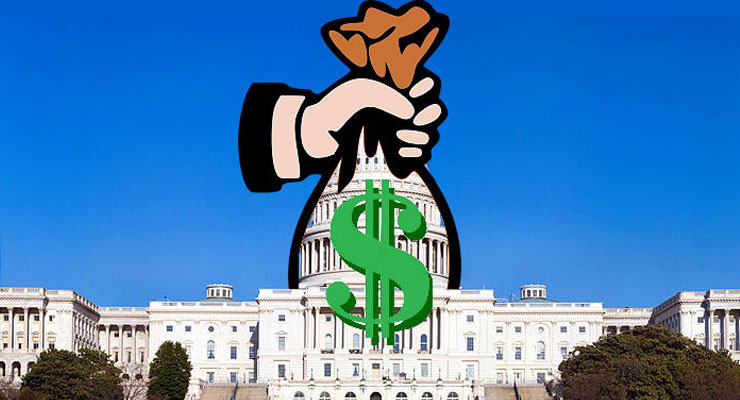
From Open Secrets
It’s official: the 2018 election was the most expensive midterm ever by a large margin, with total spending surpassing $5.7 billion, according to data compiled by the Center for Responsive Politics.
The final tally surpasses the conservative $5.2 billion projection the Center released in October.
With more than $5.7 billion shelled out by candidates, parties, committees, PACs and outside groups, the 2018 midterm leapfrogs even the then-record breaking 2008 presidential election which saw nearly $5.3 billion in total spending. It also smashes the previous midterm spending record of $3.8 billion in 2014.
“Just as the 2018 elections brought historic wins for a more diverse group of candidates, they also saw greater spending than we’ve ever seen or anticipated for a midterm election, capitalizing on years of loosened campaign finance regulation and oversight,” said Sheila Krumholz, executive director of the Center for Responsive Politics.
With more money to play with than ever before, total candidate spending grew by more than $1 billion over the previous midterm election cycle. Non-party outside spending experienced a larger percentage increase — 84 percent over 2014 — as it ballooned to nearly $1.1 billion.
Naturally, the most expensive midterm election resulted in several record-breaking individual races. Candidates and groups spent a record $209 million in Florida’s U.S. Senate race, candidates in the Texas U.S. Senate race spent an unprecedented $125 million and nine of the 10 priciest non-special election House races ever took place in 2018.
Though Democrats lost crucial Senate races, they made massive gains in the House thanks in part to an unprecedented $300 million spending advantage — and the candidate with more money usually wins.
David versus Goliath
Large individual contributions, defined by the FEC as $200 or more, accounted for $2.9 billion of the $4 billion in individual contributions flowing to candidates, outside groups, party committees and 527 committees.
The 10 most generous megadonors combined to pour $436 million into the election, displaying the widespread influence of wealthy individuals in the post-Citizens United era. Able to give unlimited dollars to super PACs, Sheldon and Miriam Adelson gave more than $123 million to help Republicans while Michael Bloomberg threw in $90 million to help Democrats.
The aftermath of McCutcheon v. FEC — the 2014 Supreme Court decision that removed an aggregate limit on contributions an individual can make over a two-year period — was especially evident in 2018. Twelve individuals (three Democrats and nine Republicans) gave more than $1 million to powerful joint fundraising committees in the 2018 cycle.
It was a banner year of sorts for wealthy self-funders, too. Sen. Rick Scott (R-Fla.) poured in more than $63 million of his own money to win his Senate race. Self-funders don’t have the most successful track record, but Rep. David Trone (D-Md.), Sen. Mike Braun (R-Ind.) and Rep. Gil Cisneros (D-Calif.) all spent more than $9 million of their own money and won.
That’s not to say small donors — the most coveted source of funding for any candidate — didn’t make an impact. Small individual contributions totaled more than $1 billion, up from $641 million in 2014. The bulk of skyrocketing small donor contributions went to candidates, who brought in $498 million from small contributions over the $196 million total in 2014.
“Although a small group of wealthy individuals continue to drive the cost of elections ever higher by donating millions to outside groups, candidates are countering their influence by relying more and more on small donations” said Sarah Bryner, research director at the Center for Responsive Politics. “Elections may be more expensive, but in 2018 we saw that candidates are able to convert small dollars into wins, and we suspect that this trend will continue into the presidential cycle.”
Click here for complete story.
Leave a Reply